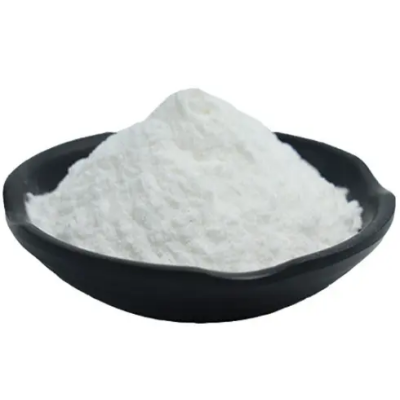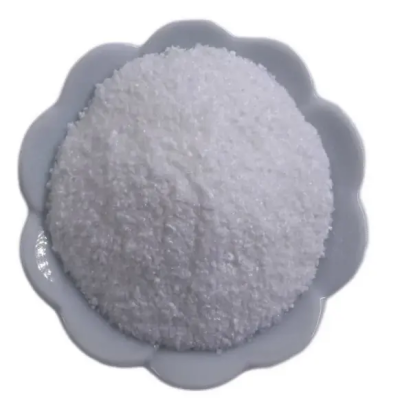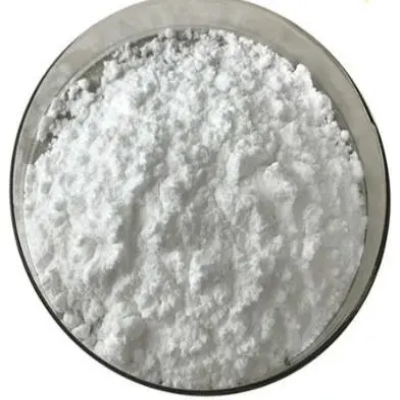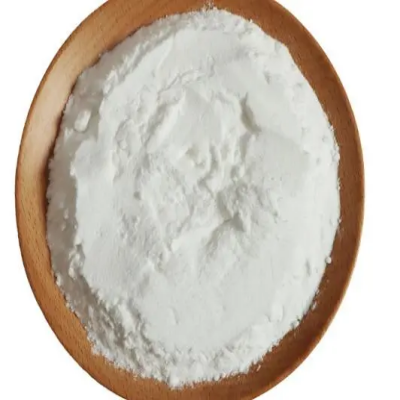-

4-AMINO-N-(TERT-BUTYL)BENZAMIDE CAS:93483-71-7
4-AMINO-N-(TERT-BUTYL)BENZAMIDE is a chemical compound characterized by its benzamide structure with a tert-butyl group and an amino group attached. It is commonly employed in chemical synthesis and research. Its molecular formula is C11H16N2O.
-

4,4′-Diaminobenzanilide CAS:785-30-8
4,4′-Diaminobenzanilide is a chemical compound known for its aromatic properties and diamine structure. It is often used as a building block in organic synthesis and chemical research. Its molecular formula is C13H14N2O.
-

4-(acetylamino)benzoic acid-1-(dimethylamino)-2-propanol CAS:61990-51-0
4-(Acetylamino)benzoic acid-1-(dimethylamino)-2-propanol is a chemical compound used in pharmaceutical research and development. It consists of a benzoic acid derivative with an acetylamino group and a dimethylamino-2-propanol moiety. Its molecular formula is C15H21NO4.
-

Ethyl 4-dimethylaminobenzoate CAS:10287-53-3
Ethyl 4-dimethylaminobenzoate is a chemical compound commonly known as Benzocaine. It is an ester derivative of para-aminobenzoic acid (PABA) with local anesthetic properties. Its molecular formula is C11H16N2O2.
-

3-Aminobenzoic acid CAS:99-05-8
3-Aminobenzoic acid, also known as meta-aminobenzoic acid or m-Aminobenzoic acid, is a chemical compound with the molecular formula C7H7NO2. It consists of a benzene ring substituted with an amino group (-NH2) at the meta position and a carboxylic acid group (-COOH). This compound is commonly used as a building block in organic synthesis and as a precursor in the production of pharmaceuticals, dyes, and polymers.
-

Butyl 4-aminobenzoate CAS:94-25-7
Butyl 4-aminobenzoate, also known as butyl p-aminobenzoate or butylparaben, is a chemical compound belonging to the class of paraben esters. It is commonly used as a preservative in cosmetic and personal care products. Its molecular formula is C11H15NO2.
-

Glycinamide hydrochloride CAS:1668-10-6
Glycinamide hydrochloride is a chemical compound derived from glycine, an amino acid. It is commonly used in biochemical and pharmaceutical research. Its molecular formula is C2H6ClN3O.
-

Methyl 4-aminobenzoate CAS:619-45-4
Methyl 4-aminobenzoate, also known as methyl p-aminobenzoate or methylparaben, is a chemical compound belonging to the class of paraben esters. It is commonly used as a preservative in various consumer products. Its molecular formula is C8H9NO3.
-

Benzocaine CAS:94-09-7
Benzocaine is a local anesthetic commonly used to alleviate pain and discomfort caused by minor skin irritations, sore throat, sunburn, teething, and insect bites. Its molecular formula is C9H11NO2.
-

Isopropyl-beta-D-thiogalactopyranoside CAS:367-93-1
Isopropyl-beta-D-thiogalactopyranoside (IPTG) is a chemical compound commonly used in molecular biology research. With the molecular formula C9H18O5S, it serves as an inducer of gene expression in various recombinant protein expression systems.
-
![(2S,5R)-Ethyl 5-[(benzyloxy)amino]piperidine-2-carboxylate oxalate CAS:1416134-48-9](https://cdn.globalso.com/xindaobiotech/SVQ81NGLP0IS9LPJB105.png)
(2S,5R)-Ethyl 5-[(benzyloxy)amino]piperidine-2-carboxylate oxalate CAS:1416134-48-9
(2S,5R)-Ethyl 5-[(benzyloxy)amino]piperidine-2-carboxylate oxalate is a chemical compound utilized in organic synthesis and pharmaceutical research. With the molecular formula C17H24N2O5·C2H2O4, it exhibits specific structural features that make it valuable in various chemical and biological applications.
-
![2-{[(3aR,4S,6R,6aS)-6-Amino-2,2-dimethyltetrahydro-3aH-cyclopenta[d][1,3]dioxol-4-yl]oxy}ethanol (2R,3R)-2,3-dihydroxysuccinate CAS:376608-65-0](https://cdn.globalso.com/xindaobiotech/EF_2@EXV4CQVMX85.png)
2-{[(3aR,4S,6R,6aS)-6-Amino-2,2-dimethyltetrahydro-3aH-cyclopenta[d][1,3]dioxol-4-yl]oxy}ethanol (2R,3R)-2,3-dihydroxysuccinate CAS:376608-65-0
2-{[(3aR,4S,6R,6aS)-6-Amino-2,2-dimethyltetrahydro-3aH-cyclopenta[d][1,3]dioxol-4-yl]oxy}ethanol (2R,3R)-2,3-dihydroxysuccinate is a chemical compound with potential biomedical applications. It contains an ethanol moiety with a 2R,3R-2,3-dihydroxysuccinate group. Its molecular formula is C14H22NO7.

